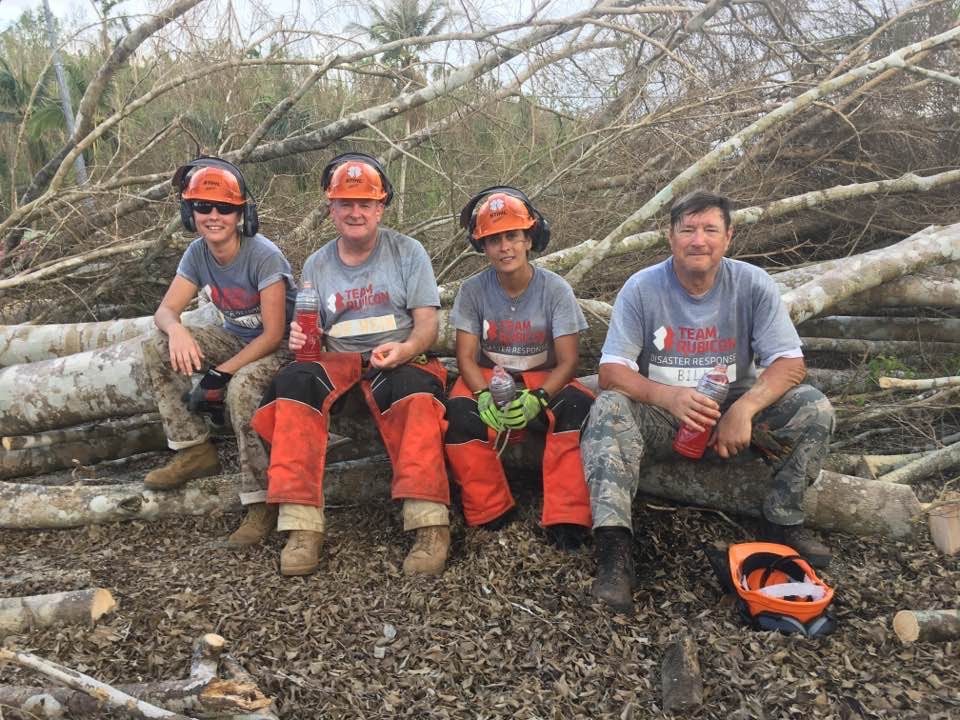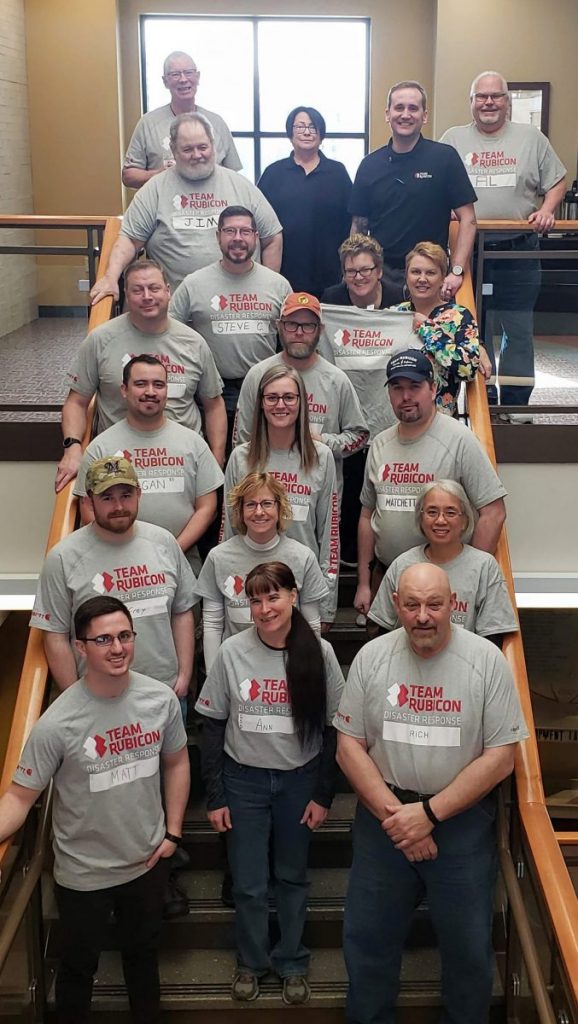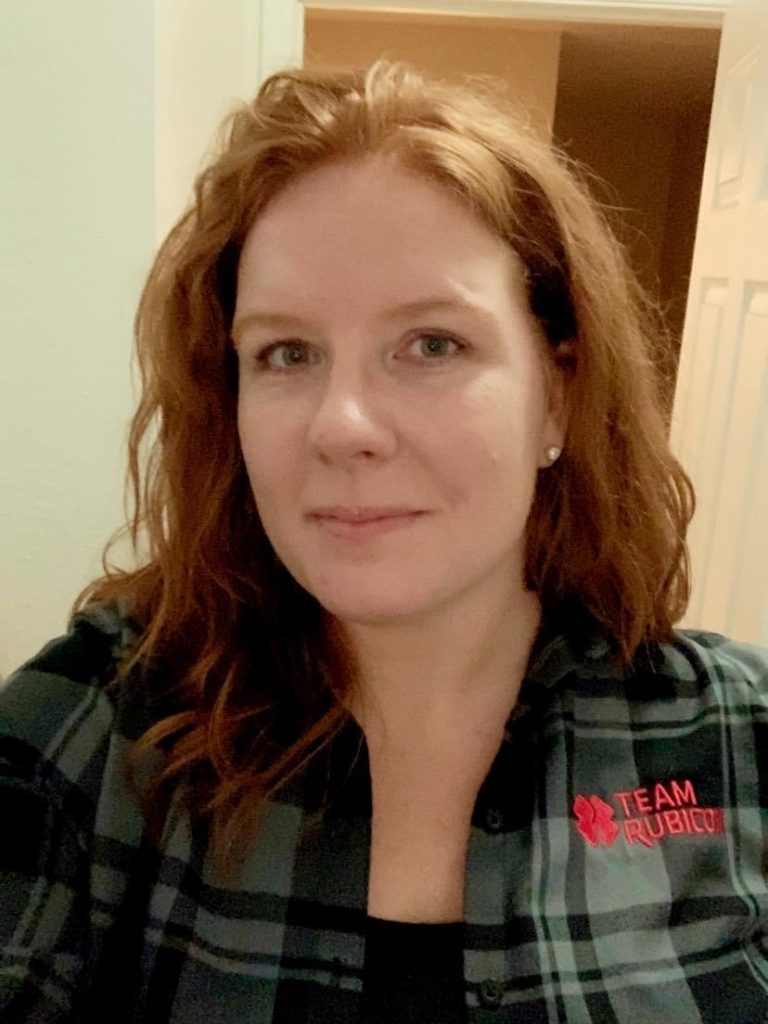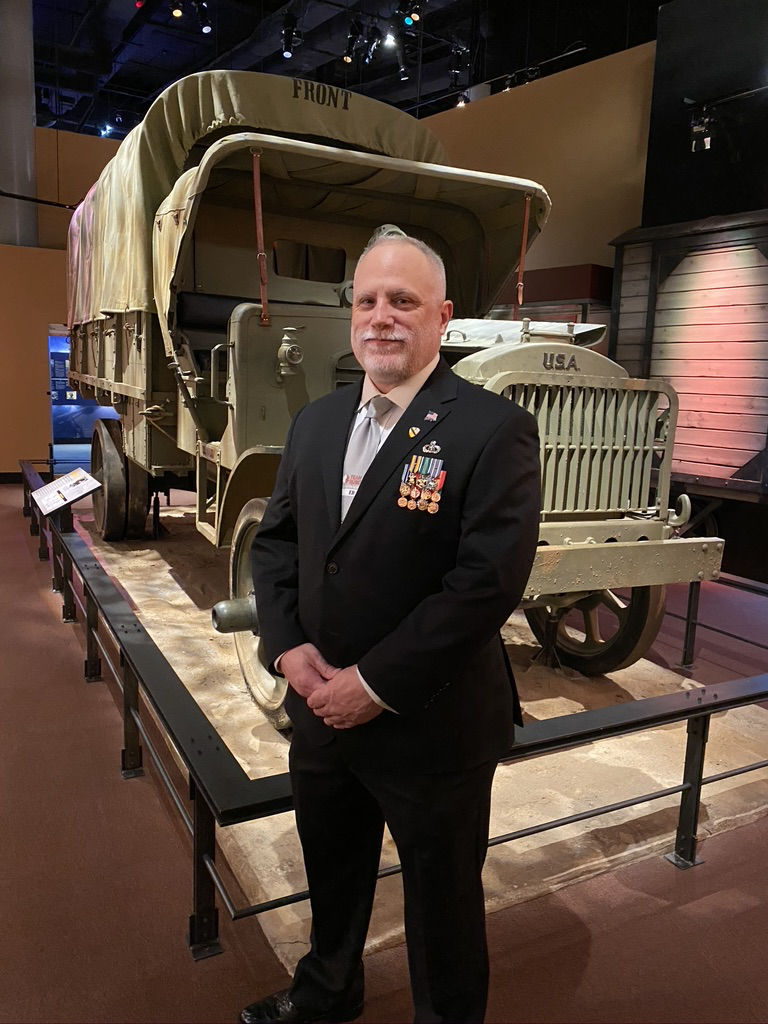Greyshirts Turn to Virtual Volunteering During the Coronavirus Pandemic
A look at how four Team Rubicon volunteers tackled some very niche remote volunteer work during COVID-19
In mid-March, when states all over the country went into shelter-in-place mode, Team Rubicon put out a call for virtual volunteers to assist with remote operations. The announcement was geared towards those Greyshirts ages 65 and over since they were restricted from deploying due to COVID-19 vulnerability, a decision made by Team Rubicon management based on CDC guidelines. Almost 2,000 Greyshirts answered the call.
Jeff Wagg, who oversaw virtual volunteering deployments nationwide, said Greyshirts came out in even greater numbers than there were jobs to fill. “More people signed up to virtually volunteer than responded to Hurricane Harvey.”
In fact, in April and May, Team Rubicon had just 20 requests for remote assistance from organizations and agencies across the U.S. Those Greyshirts who were able to volunteer virtually handled a complex range of remote needs, doing a daily social media comb for the city of St. Louis to helping the Salvation Army in Reno secure and arrange transport for donations to arranging for transportation for people in quarantine to get to hospitals for Toledo’s Emergency Management Agency.
Here’s a look at four Greyshirts who virtually volunteered during the coronavirus pandemic this spring, and some of the work they did.
The Virtual Chainsaw Instructor, Bill Bontly
After Texas-based Bill Bontly, a U.S. Air Force veteran, retired from his second career as a corporate pilot, it became clear his was intruding on someone’s domain: his wife’s. So, he signed up with Team Rubicon and deployed to Hattiesburg, MS in response to a tornado. He said he’d be gone a few days; a week later his wife called to ask if he was ever coming home. Bontly had found a new mission in Team Rubicon, and decided to get certified as a sawyer. He quickly recruited to be a sawyer instructor instead.
By the start of the coronavirus pandemic, Bontly had already taught more than 15 sawyer classes. But, when in-person trainings were halted for social distancing, Bontly and Team Rubicon Mobile Training Associate Jacob “Junior” Nilz hatched another plan: They would teach continuing education type courses and they’d do it virtually.

Rather than work on guiding future chainsaw operators and instructors in the kind of debris assessment skills they might usually cover, Bontly and Nilz dove into pedagogy. They focused on things like equipment maintenance and how to sharpen a chain. They also worked with instructors-in-training on what they taught, and how they taught it. And, of course, they got rigorous with safety aspects—easy to do when your machine is a computer, not a motor ax.
The workshops might have been more “philosophical discussions,” says Bontly, but they’ve had an impact. While all prospective operators and instructors will still be required to demonstrate their technical skills and get certified through hands-on training, they now have more aptitude in non-tactile capabilities.
Bontly and Nilz have taught 20 virtual workshops for more than 400 regional chainsaw operators and instructors during the first three months of the pandemic. One of the best outcomes? Bontly and Nilz’s workshops led to the publication of a new chainsaw training doctrine, something that wouldn’t have happened so quickly if it wasn’t for the virtual environment.
Smooth Operator Sharon Sinklair
In Wisconsin, retired trust officer Sharon Sinklair, a U.S. Army veteran and Greyshirt of three years, worked with the United Way to staff her state’s 211 system, the free, confidential referral program in all 50 states that connects people to local health and human services. During the early days of the coronavirus pandemic, 211 systems across the U.S. were taxed as people tried to understand their area’s stay-at-home orders, when they should see a doctor, where to go for testing, and more.

Using the United Way curriculum, Sinklair trained approximately 12 Greyshirts to volunteer virtually to answer the phones from their own homes. The calls they fielded came from people needing medical care, homeless individuals asking where they should go to shelter-in-place, and the larger public asking pandemic-related questions. One caller who had recently met a girl online who lived in a different state said he knew they were supposed to be sheltered in place, but was it okay if he drove to meet her?
While most of the 211 work has trickled off for Sinklair and the others, one Greyshirt she trained is still answering calls six to 18 hours per week.
Sinklair and team may have not been interacting with people in-person during the pandemic, but their virtual volunteer work was critical and rewarding, helping to ease the strain on an already burned out 211 staff that was also supporting an overwhelmed health care system. With the pandemic came a “realization that what old people can do is so big,” Sinklair said with a chuckle.
In addition to the 211 training and work, Sinklair has also been doing mobilization coordination for Team Rubicon during the pandemic and has found personal rewards in the connections she’s made helping other Greyshirts become more active with Team Rubicon. “One thing I love about TR is we have no glass ceiling, and you can create your own roles,” she said.
MOB Boss Angelica Perales
Alaska-based Angelica “Angi” Perales, a former Army Apache helicopter crew chief and current aircraft maintenance controller, has also created her own roles in Team Rubicon. She’s been a Greyshirt since 2015 (her mom became a Greyshirt the year prior) and though operations had been limited in Alaska, by the winter of 2017, Perales and others had begun building a regional Team Rubicon leadership team that covers Alaska, Oregon, and Washington. In February 2020, Perales became the Northwest Territory MOB coordinator. When the pandemic hit, she also started working with Oregon’s Emergency Operations Center’s Joint Information Center’s Virtual Operation Support Team. In that operation, 15 Greyshirts combed news and social media six days per week, identifying COVID-related needs, comments, and discussions to formulate a bigger picture of how the coronavirus was affecting the state.

“We used some guided questions to help us. And we wrote daily listening reports,” Perales said of the operation that started on March 23 and ended in late May.
Where Perales really shone, however, was in her work as the Northwest Territory’s mobilization—or MOB—coordinator, where she was responsible for helping determine if operations were feasible. Using power BI tools, Perales would get a snapshot of the number of Greyshirts who might be in the area and who had any necessary specialized skills, such as medical provider licenses, and then reached out to book them for operations. Sometimes, that could be a challenge, as was the case with the operation to support the Yakima Rotary Food Bank.
“We don’t have a lot of people out in rural, Washington, in the southeast. For the Yakima area, we needed two to four Greyshirts—they had to be even numbers—and it was so hard to get folks out there,” explains Perales. “Sometimes, we would just have to go with one Greyshirt, who’s also the lead for that operation.”
In the end, Pareles has herself staffed 19 ops in Washington and Oregon since March. In total she and the two other territory coordinators have mobilized Greyshirts for 53 ops this spring, all in support of COVID-19.
“Angelica’s attitude says ‘We don’t quit and we won’t let this pandemic lessen our impact’. She is a single mother, working a full-time job and still handles mobilization with a smoothness beyond belief,” said Bonnie Young, Team Rubicon’s Northwest Territory mobilization lead. “People like Angelica are the cornerstone of TR, bearing the weight necessary to keep the Team standing strong.”
Perales called her virtual volunteering work during the pandemic “a great way to funnel the stress and not feel too out of control.” She also said it gave her a chance to show her 13-year-old son that there are ways to help even with limitations. The only downside to that is that now her son wants Team Rubicon to lower the age of sawyers to 13 so he can get certified. For now, Mom’s not having any of that.
Map Master Ed Amrhein
Virginia-based Ed Amrhein retired from the U.S. Air Force after 24 years—14 spent as an enlisted weather technician; 10 commissioned as a weather officer—back in 2010. Now he spends his days working as a geospatial information data scientist and engineer—or as he says, “a professional geoGeek.” As a member of Team Rubicon’s GeoVis team, he and other volunteers leverage external partnerships to acquire publicly-available data, such as post-disaster aerial imagery, which is then used to assess damage and help drive deployment decisions in the wake of a natural disaster.

On March 19, the offices of the federal government agency he works for—he won’t say which one—closed due to COVID-19, and working from home wasn’t an option. So, when Team Rubicon asked if he could help out with some mapping projects for the COVID task force, Amrhein was all in, thinking it meant making an occasional map as does on the GeoVis team. To his surprise, he was told instead he would be serving as the leader of the new mapping unit under the Visibility and Synthesis Task Force, which provides general situational awareness of international and domestic conditions, environment, and events and also provides tools and products to aid in decision-making at all levels of the organization. That includes making some seriously intricate maps.
During the months that Amrhein was off work, he and his team then came up with a new design for the disaster dashboard, which Team Rubicon uses for monitoring and assessing natural disasters and humanitarian crises domestically. The new design features a baseline map, plus the ability to overlay it with everything from COVID-19 caseloads by county to where clusters of deployable Greyshirts are exceptionally dense to real-time weather threats.
“Several people conducted research to find data we can map or other datasets that were already map-ready that we could integrate into the dashboard,” Amrhein explained. “This particular interactive Esri map-based dashboard is only the beginning of what’s possible with the software.”
Has it worked? Absolutely, including for Greyshirts not on operations. Traci Rankin, IMT manager and Clay Hunt Fellow, even used the dashboard in her own community to help her local schoolboard decide whether or not it was safe to resume classroom and other educational work.
For Amrhein, the role was the convergence of the things he’s most passionate about: GIS and maps, weather, and service. Working on the dashboard helped increase his understanding of Team Rubicon as an organization and helped advance his technical skills with the software.
“I only hope I’ve been able to give as much as I have benefited by being part of this project and this great organization and that I’ve been able to at least make a small impact or difference in moving the organization forward along this path,” said Amrhein.